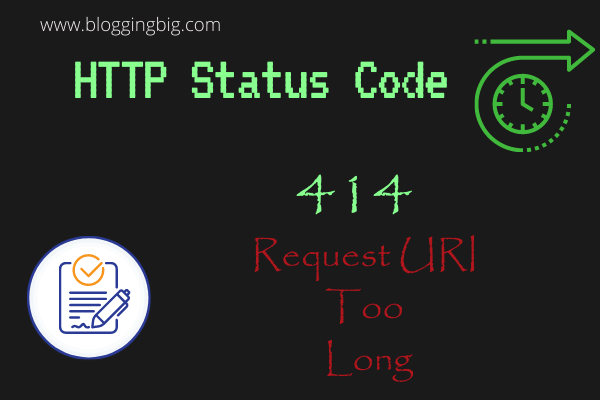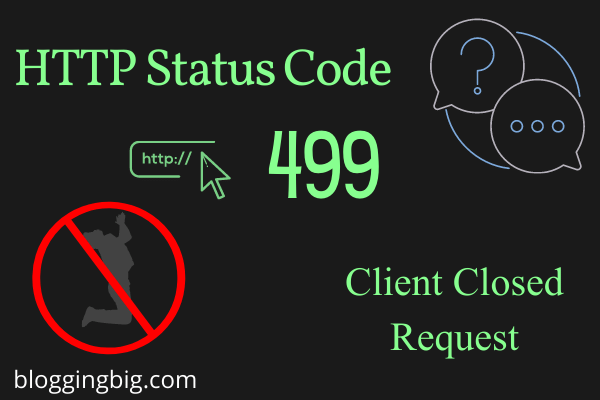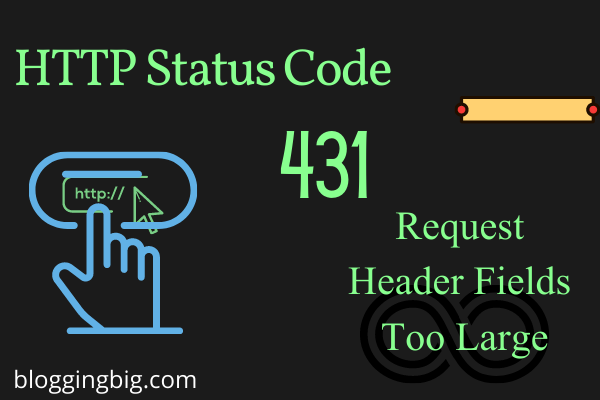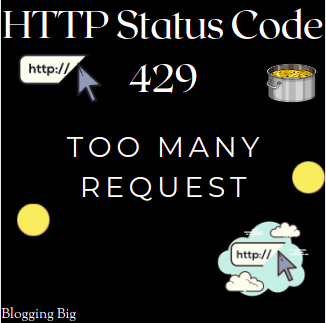Navigation
What is Status Code 414 Request URI Too Long means?
The HTTP Status Code 414 Request URI Too Long is a response code that indicates the client’s URI is longer than the server can handle.
There are a few uncommon circumstances in which this may happen:
- When a client has incorrectly converted a POST request with long query information to a GET request with long query information,
- When the client has descended into a redirection loop (for example, a redirected URI prefix that points to a suffix of itself)
- When the server is under attack by a client attempting to exploit potential security holes.
A 414 status code is cacheable by default unless the method definition or specific cache controls state otherwise.
There are several particular measures you may take to remedy this problem, much like many other WordPress errors. For allowing longer URLs, you’ll need to change certain setup settings. When you’re done, the mistake will be gone as well.
Before we go any further, it’s important mentioning that a URI and a URL are essentially the same things. While there are significant distinctions between the two, we’ll stick with “URL” in this case to keep things simple.
Status
414 URI Too Long
Specifications
| Specification | Title |
|---|---|
| RFC 7231, section 6.5.12: 414 URI Too Long | Hypertext Transfer Protocol (HTTP/1.1): Semantics and Content |
414 Code References
Rails HTTP Status Symbol :request_uri_too_long
Go HTTP Status Constant http.StatusRequestURITooLong
Symfony HTTP Status Constant Response::HTTP_REQUEST_URI_TOO_LONG
Python2 HTTP Status Constant httplib.REQUEST_URI_TOO_LONG
Python3+ HTTP Status Constant http.client.REQUEST_URI_TOO_LONG
Python3.5+ HTTP Status Constant http.HTTPStatus.REQUEST_URI_TOO_LONG
How To Fix Status Code 414 Request URI Too Long?
A WordPress plugin’s capabilities may include the generation of lengthy URLs
It’s difficult to tell whether a plugin is to blame at first glance, but it’s worth looking into its individual settings for a dedicated option to limit the length of URLs. If that’s the case, toggling this might cure the status code 414 in a matter of seconds.
However, under typical conditions, there are a few more things you may perform to aid in the diagnosis of the error:
- Look for any mentions of the error or any other identifiable items in your server logs.
- Your browser developer tools, particularly your Console, may provide some insight into the error’s source.
- If it isn’t you, contact the site’s owner or developer and inform them of the problem. It’s possible that they’ll have a solution or may provide more advice.
Now let’s move on to the fixing part.
1. Log In to Your Server
Before you can work on the server, you need to get into it, which is where your SFTP abilities come in.
We’ve already discussed how to access your site using SFTP, and once you’re in, you’ll need to figure out what sort of server you have. Apache and Nginx are the two most common kinds.
It’s possible that you already know what kind of server you’re running. If that’s the case, you can move on to the following step.
Here’s a bit of advice if you’re having trouble: check for a.htaccess file. It’s located in your server’s root directory, and if you see it, you’re running an Apache server. A distinct configuration file is used by Nginx servers.
However, it’s possible that you’re using an Apache server that lacks a .htaccess file. As a result, there are two more options available to you:
Use the Whois Domain Tools webpage to search up a domain
Although this isn’t a surefire approach, it may reveal the sort of server you’re utilizing.
Check with your hosting company about the sort of server you’re using
Of course, your host will be aware of the server you’re using. When you’ve decided the sort of server you’ll employ, you may go on to the next step.
2. Find the Server Configuration File and Open It Using Text Editor
The .htaccess file, which is stored in your root directory, is used by Apache servers for basic server setup. However, this isn’t the file you’ll need to resolve the 414 Request-URI Too Large issue.
You’ll need to go further into your advanced setup options in this situation. These are located in the server’s root folder, not in your site’s root folder.
When you use SFTP to access your site, you’ll usually see a directory that contains all of your sites (along with some other files). You can usually get to the server root directory by going up a couple of levels:
Then open /etc folder and /apache2. Then open apache2.conf file. This is the one we needed.
The full path of the configuration file will be /etc/apache2/apache2.conf.
The procedure is same for Nginx servers. It’s a topic we touched on briefly in our post on changing the maximum upload size in WordPress. /etc/nginx/nginx.conf will be the location of the configuration file.
Open your file in your preferred text editor once you’ve found it. You’re ready to tweak it at this point.
3. Adjust the Configuration File To Allow for Longer URLs
They have various parameters to alter, much like Apache and Nginx servers have separate configuration files. If you haven’t previously done so, you’ll need to open your server in an editor, regardless of its kind. Downloading the file to your computer, working on it, and then uploading it back to the server is our recommended method.
Look for the LimitRequestLine setting in Apache configuration files, or add it at the bottom of your file if it isn’t already there:

Use at least 128000 for the value. If you need to go higher, stick to two-digit multiples (i.e. the next value should be 256000).
You’re looking for the large client header buffers option on Nginx servers. You’ll see two values related to number and size here. Large client header buffers 4 8K, for example. The size is the only figure you need to change here; you may go from 8K to roughly 128K, though you may need to go higher (again in multiples of two).
Save your modifications and send your configuration file back to your server after you’re finished. Check your site again at this point, and the 414 Request-URI Too Large problem should be gone.
FAQs
How do I fix Error 414?
How To Fix 414 Request URI Too Large:
1. Open Configuration File(Apache or Nginx).
2. Increase URI limit.
3. Restart the webserver.
What is a 414 request?
The HTTP Status Code 414 Request URI Too Long is a response code that indicates the client’s URI is longer than the server can handle.
Conclusion
I hope this article was able to help you with your doubts and queries related to the HTTP status code 414 Request URI Too Long. Still, if there are any queries related to this topic, feel free to ask in the comment section, we would be happy to assist you. Thank you.
Related post:
HTTP Status Code 300-Multiple Choices
HTTP Status Code 204 – No Content
HTTP Status Code 203 – Non-authoritative Information
HTTP Status Code 207 Multi-Status
HTTP Status Code 208 Already Reported
HTTP Status Code 400 Bad Request
HTTP Status Code 401 Unauthorized
HTTP Status Code 403 Forbidden Error
HTTP Status Code 404 Not Found





Kedar Dangal
Making a difference, Adding the sum.